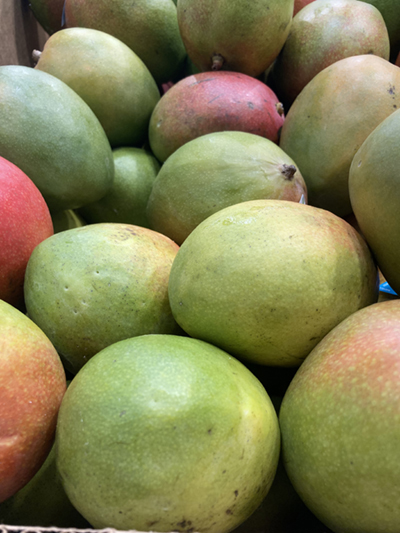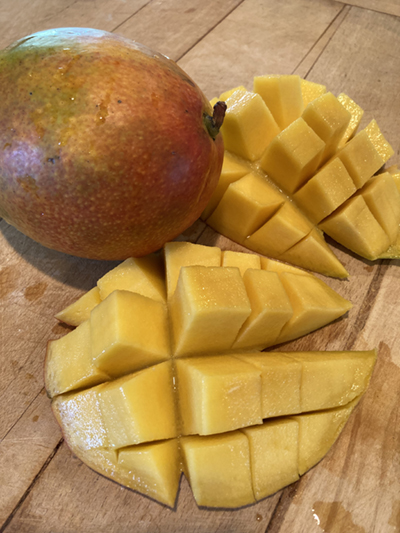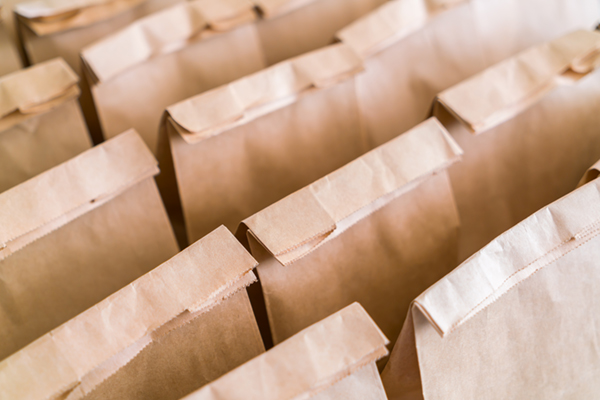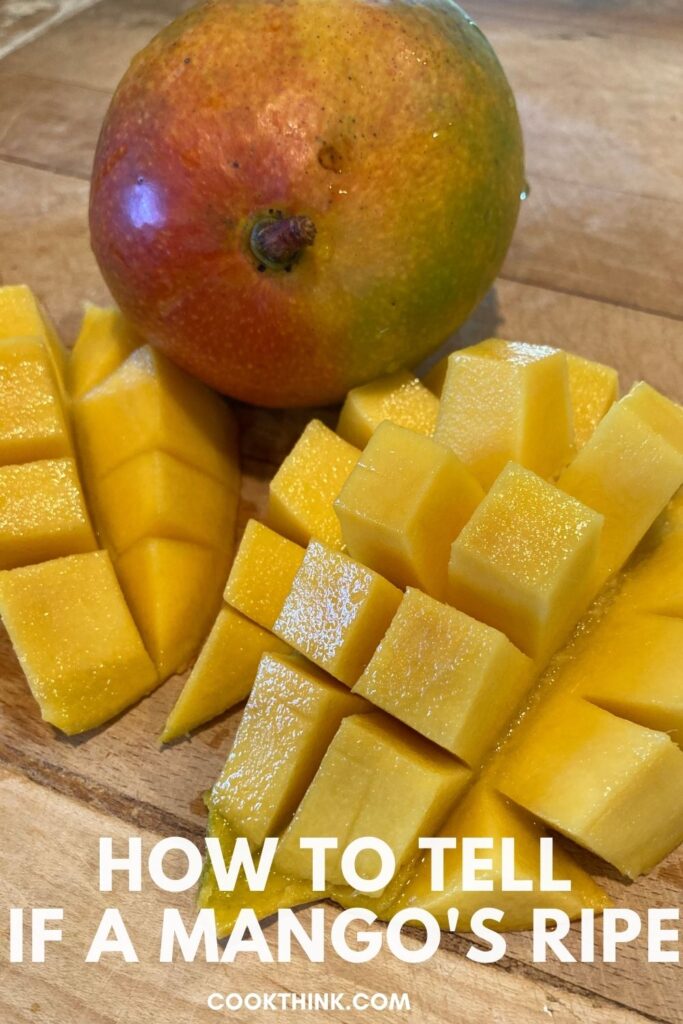Does Mango Continue to Ripen After Cut
Whether you've never had a mango, or you've grown to love them with fondness, we're providing everything you ever wanted to know about how to cut a mango, how to tell if a mango is ripe, how to ripen mangoes, how to store mangoes, and mango nutrition.

What are mangoes?
Mangoes are a kind of stone fruit, like peaches, nectarines, plums, that have a pit or stone seed in the center. They are grown in tropical locations and are a member of the drupe family that contains an outer skin, then a flesh, and at the center is a pit.
A mango's flesh can be sweet or somewhat tart in flavor depending on its variety and the stage of its ripeness.
How to pick the best mango
To know how to select your mangoes, you'll want to remember that choosing the best mango depends on when you'd like to eat it. If you want to eat it soon, knowing how to pick the perfect ripe mango or a mango that is as near to being ripe as possible using our key indicators for knowing your mango is ripe below. Pay careful attention to the color, smell, and firmness of the fruit.
If you want to buy a mango, but you don't want to eat it for a few days, pick a mango that is not yet ripe. One that shows color indications that it still needs to ripen as well as the fact that it's quite firm, and doesn't smell sweet yet are makings for a perfect mango for eating later.
How mangoes are picked
Mangoes grow on trees and are typically picked manually by human hands or by using harvesting machines.
How to tell if a mango is ripe
How to pick a ripe mango: To tell if a mango is ripe, you'll want to take a close look at its appearance and notice its color. Some mangoes change color as they ripen and if you know what color to look for, for that variety of mango, you'll be on your way to having a good indication of knowing if your mango is ripe. Color is just one aspect. We'll go into more detail below.

How to ripen mangoes
There are a handful of different ways you can help your mango to ripen. We'll go over each one below. It might be beneficial to know that ripening a mango as naturally as possible is what provides the best results for quality.
How to store mangoes
Mangoes can be stored at room temperature, in the refrigerator, or in the freezer. We'll help you determine which one is best depending on the state of your mango and when you plan to eat it.
How to cut a mango
Cutting a mango can be intimidating and somewhat tricky the first time you try it, because there's a great big seed in there that's as hard as a rock. We'll show you how to carefully cut a mango, while minimizing waste, and optimizing results for the best mango eating.

How to cut and peel a mango
There's not necessarily a right or wrong way to cut and peel your mango, but there is a way that you can use to peel and cut your mango that will make the outcome more neat and tidy, as well as simplify the process.
Selecting a ripe mango
Before cutting your mango, run it through the tests that we've outlined in this post to determine if your mango is indeed ripe. You'll want to use a ripe mango for the most delicious outcome.
Cutting and peeling a mango
Now that you've determined that your mango is ripe, you should wash it to remove any debris, germs, or pesticides, and then we can begin to cut it and peel it. And strangely enough we're going to do it in just that order, cutting first, then peeling.
How to cut a mango: Using a knife
To cut a mango using a knife, stand the clean mango up on its end and slice down each side, leaving a bit of a gap in the middle where the pit is anticipated to be located.
Cut the bit that's left on either side leaving a pit, two large edge pieces and two smaller pieces.
How to peel a mango: Using a vegetable peeler
You can peel a mango using a vegetable peeler if desired, but we've found the best way to peel a mango is after it's been cut. So, let's proceed with finishing the cutting before we peel it.
How to remove cut mango chunks from the peel
Once you've removed the pieces of mango flesh from the pit, the next step is to cut it into chunks. It's one of those pro tips and tricks.
Dice the mango into squares by running the tip of a sharp knife making relatively equally measured horizontal lines across the cut mango. Then repeat, making vertical lines.
Now that you have mango squares, the next step is to remove the peeling from the flesh. That can be done, using a few different methods.
Knife Method
The first method to remove the mango flesh from the skin is to use a sharp paring knife. Carefully cut the flesh of the mango as close to the skin as possible, removing it from the skin. Discard the skin.
Spoon Method
Another method is to use a spoon. With a firm grip scrape the mango flesh from the skin removing it completely.
Cup Method
You can also use a cup to scoop or scrape off the diced flesh from the mango skin and prepare it for eating.
How to Ripen a Mango (4 Easy Ways)
Many times when you've selected the perfect mango from the grocery store, it's not going to be ripe. Mangoes are picked before they ripen and then shipped to the store. This allows them to be stacked while shipped as well as remain in good quality for the window of time that it takes for them to arrive.
Can you imagine what the quality of mangoes would be like if the grower waited until the mangoes were ripe before they picked them and shipped them? They would likely be rotten and mushy by the time they were available to us at the store.
Knowing how to ripen mangoes at home can be valuable. Ripening an unripe mango can be simple if you have the time. Here are 4 methods that you can use to know how to ripen mangoes.

1. Sit the mango out at room temperature.
You can use patience and wait for your mango to naturally ripen while placing it on the counter at room temperature. This is a favorite way to ripen a mango, with quality results. Your mango will likely ripen in 1-7 days using this method.
2. Place the mango in a brown paper bag.
You can slightly speed up the process of ripening your mango by placing it in newspaper or a paper bag, loosely folding down the top, and storing it on the counter at room temperature. A mango is among ethylene producing fruits that naturally release ethylene and by placing your fruit inside the bag, the gas is trapped, which causes the mango to ripen more quickly.
3. Popcorn and Rice
Placing your mango in a bowl of popcorn kernels or uncooked rice will have the same effect as the paper bag. It will trap the gasses and speed up the ripening process.
4. Microwave Method
If your mango craving just can't wait, you can place 4-5 small slits in the skin and place it in the microwave for 15 seconds at a time, for immediate results. You should know however, that using the microwave compromises the quality of your mango. And we're not real fond of microwaving anything, but hey, we thought you should know.
Next, we'll focus on meal prep and storage of mangoes. Specifically, you'll want to know how to store mangoes when ripe, especially if you don't plan to eat them right away.
How to Properly Store Mangoes
There are three main ways to properly store mangoes. Ideal storage depends on the condition and status of your mango and includes, at room temperature, in the refrigerator, or in the freezer. We'll also consider how to store ripe mangoes. Let's take a look at each one.
Room Temperature. Your mango should be stored at room temperature if it's not yet ripe and you plan to eat it within a week.
Refrigerator. Your mango should be stored in the refrigerator if it has just ripened, but you don't plan to eat it for a few more days. Place the whole mango in the refrigerator and eat it within a week.
Your mango should also be stored in the refrigerator if it's ripe and you've cut it up. Move the mango to a refrigerator once ripe by placing it in an airtight container and storing it in the refrigerator for up to 3 to 5 days.
Freezer. Your mango should be stored in the freezer if it has been cut up and you want to postpone using it for up to three months. Mango freezes well when placed in a zipped freezer bag.
Health Benefits
There are many health benefits that can be obtained from eating mangoes. They are packed with nutrients, which we will outline below. Mangoes also contain good protective antioxidants that contain immune-boosting properties, they're low in calories, and support heart health. Mangoes may also support eye health, improve digestive health, and prevent diabetes.
Mango Nutrition
Following are the estimated nutrition facts for 1 cup peeled and sliced fresh mango.
Calories: 99
Fat: 0.6g
Sugar: 22.5g
Protein: 1.4g
Carbohydrates: 24.7g
Fiber: 2.6g
Vitamin C: 67% DV
Vitamin A: 10% DV
Vitamin K: 6% DV
Vitamin B6: 12% DV
Vitamin E: 10% DV
Potassium: 6% DV
Magnesium: 4% DV
Riboflavin: 5% DV
Folate: 18% DV
Copper: 20% DV

Four Mango Varieties to Try
In the United States, there are typically four mango varieties to try. They are Tommy Atkins, Ataulfo, Keitt, and Palmer. The Tommy Atkins variety is the most popular and perhaps the most widely distributed. Our family enjoys them regularly from Aldi. What variety does your grocery store carry?
Since different varieties are different colors when ripe, you'll want to use each of the variety descriptions below to know how to tell when a mango is ripe.
Tommy Atkins is medium to large in size. It is green with bright red blush in color when ripe. And its growing season is March through October.
Keitt is also medium to large in size. It is green when ripe, and grows from July to September.
Palmer is the third mango that is bigger in size. It is considered medium to large. It is a dark green color with red blush, when ripe, and it grows from August to October.
Ataulfo is a smaller mango variety that we'd categorize as small to medium. It is golden yellow when ripe and grows from July to February.
Keep reading for how to tell when a mango is properly ripe and how it should be used in meals.
When Is A Mango Ripe? – 6 Easy Signs
You might be wondering what specific ways you can use for knowing whether a mango is ripe. Here are 6 ways.
How To Tell If A Mango Is Ripe (When Is A Mango Ripe?)
By using your 5 senses, check by appearance, check by smell, check by touch, you can give a pretty accurate evaluation of whether a mango is ripe, if you know what to look for. Let's use the Tommy Atkins variety in our example as we walk through these six steps.
1. Color
According to our chart, the Tommy Atkins variety should be green in color with red blush when it's ripe. Look for the red blushing color to appear on your mango as it ripens. A plain green mango is not yet ripe.
2. Softness
A ripe mango is slightly soft to the touch when you press your thumb gently into it. If your mango is still firm, that means it's not yet ripe.
3. Smell
A ripe mango smells fruity and somewhat like melon when it's ripe. When it's not yet ripe, there is not much fragrance when you smell the mango.
4. The skin around the stem
If you notice the skin around the stem of your mango turning slightly yellow, it's likely that your mango is ripe. If the skin is still green, your mango is probably not yet ripe.
5. Stem oozes mango juice
Sometimes when your mango is ripe, you might notice a bit of mango juice oozing from the stem, however this is not always the case. If your mango's stem isn't oozing juice, but indicators one through four above are present, it's likely that your mango is ripe. This indicator is not a vital one.
6. Shriveled skin around the stem
Another indicator that might be present as your mango begins to ripen is that the skin around the stem might begin to shrivel. However, this indicator might or might not occur. If one through four above are present, then your mango is likely ripe.
Frequently Asked Questions
Following are frequently asked questions about how to cut a mango, how to tell if a mango is ripe, how to ripen mangoes, how to store mangoes, and mango nutrition. We trust you'll find these answers helpful. If you have a question that's not listed here, please drop it in the comments box below.
What color is a ripe mango?
The color of a mango that is ripe varies depending on the variety of mango. See our chart above that notes different varieties as well as their color when ripe.
Should mangoes be refrigerated?
We only recommend refrigerating mangoes after they are fully ripened, or if they have been peeled and cut. If your mango has been cut, place it in an airtight container in the refrigerator for storage.
What's the fastest way to ripen a mango?
There is a difference between the fastest way and the best way to ripen a mango. The best way to ripen a mango is to store it at room temperature and optionally placing it inside a brown paper bag to allow it to ripen. This process will take a few days.
The fastest way to ripen a mango is by cutting a few slits in the mango's skin and placing it in the microwave for 10-15 seconds at a time. Please note that this method will tend to compromise the quality of your mango in texture and flavor.
Can I judge the ripeness of a mango by its color?
Yes, it is possible to look at the color of a mango's skin and know whether the mango is close to being ripe. We also recommend taking the firmness of the mango, as well as the smell of the mango into consideration when determining whether the mango is ripe.
How long do mangoes last?
The stage of the mango as well as its state will determine how long it lasts. For example, a mango that is not yet ripe, has not been cut or peeled will last a whole lot longer than one that is ripe and has been diced.
Mangoes that you find in the grocery store are picked before they're ripe and are shipped as such. You usually have to wait for grocery store mangoes to ripen before they're eaten. A mango that's purchased at the grocery store can usually last about a week a room temperature before it ripens. At this point, to continue to lengthen shelf life, the whole mango should be placed in the refrigerator.
Does a mango go bad?
Yes, a mango can go bad. Mangoes can rot and spoil, just like any other produce. If your mango is really squishy, oozing juice, has turned brown, or smells bad, it is possible that your mango has gone bad. You'll not want to eat a rotten mango.
How to tell if a mango is bad?
To tell if your mango is bad, you'll want to inspect the skin color. If the color is brown, black or another discoloration, your mango has likely gone bad.
The second step is to check the firmness of the mango by gently pressing your finger or thumb into the flesh. If the mango is extremely soft or oozing juices, your mango has likely gone bad.
The final step is to smell your mango. A bad mango has a soured odor to it, as compared to a sweet-smelling good mango.
How to tell if mango is ripe?
To tell if a mango is ripe, pay attention to its skin color, the firmness of the mango flesh, and the smell of the mango. We will go into detail for each of these three aspects in this post.
How long would it take to ripen your mangoes at home?
It takes approximately 1-7 days to ripen a mango at home depending on the method used, the current status of its ripeness, and the room temperature.
How do I store uncut or unripe mangoes?
The best way to store uncut or unripe mangos is at room temperature. This will allow them to ripen in the most natural way possible which will result in the most delicious fruit.
To speed up the ripening process, you might opt to place your mango in a brown paper bag and loosely roll the top down. This will help to trap ethylene gasses that are released by the mango and will speed up the ripening process of the fruit.
What's the best season for mangoes?
The best season for mangos depends on the variety of mangos and where the mangos are grown. Tommy Atkins is one of the most popular varieties and are found at many grocery stores. They are grown from March to October, but can typically be found in stores year round.
Can I eat mango skin?
We don't recommend eating mango skin due to its unpleasant taste. However, mango skin is not toxic if consumed. To prepare your mango, wash it well before cutting into it. Follow our instructions for cutting a mango and discard the skin, rather than eating it.
Are mangoes healthy?
Yes, mangoes are healthy as they're packed full of nutrients that help support skin and overall health. They include antioxidants, as well as vitamins B6, A, E, and K.
Eating too much mango can have its drawbacks like any food. Be careful to eat it in moderation.
Can dogs have mango?
Yes, dogs can eat mango in moderation.
When is a mango ripe enough to eat? We tell you how to check!
So, by way of review, when is a mango ripe enough to eat? Hint, you'll need to use your senses. Here's a quick summary of how to tell if a mango is ripe or not.
Tip 1: Sniff me!
The smell. Smell the whole fruit and if it smells sweet and somewhat like a melon, it could be ripe.
Tip 2: Squeeze me!
The feel. Give a gentle squeeze to the mango with your finger and thumb. If it's still firm, it's not ripe yet, but if it's soft, then you've got yourself a ripe mango.
Tip 3: Look closely!
The look. Look closely at your mango for the other indicators we mentioned. See if the skin's color has changed to the desired color for ripeness, notice if the skin is beginning to shrivel around the stem, and see if there's any mango juice oozing out of the stem.
Save to Pinterest!

Mango Recipes
There are so many possibilities of recipes you can make that include mangoes. Mangoes can be found in salads, sweet and savory dishes, as a garnish, in a side, in fruit salad, made in a sauce for your meat and much more.
Other Delicious Recipes
For more posts like this one, follow us on Pinterest, Facebook, Instagram and YouTube.
bunkerpliteruning.blogspot.com
Source: https://cookthink.com/how-to-tell-if-a-mango-is-ripe/



0 Response to "Does Mango Continue to Ripen After Cut"
Post a Comment